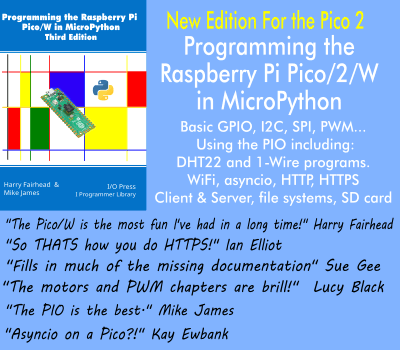| Videos From Inaugural Computer History Conference |
| Written by Sue Gee |
| Sunday, 12 June 2022 |
|
The First International Research Conference on the History of Computing, dubbed Computing's Woodstock, gathered together a global elite of computer pioneers. It took place in June 1976 and now the Computer History Museum has restored 21 video recordings of its sessions and posted them on its YouTube channel. Announcing this new resource which provides a fascinating insight into the early years of the digital electronic computer, Dag Spicer, Senior Curator at the Computer History Museum states: For five summer days in 1976, the first generation of computer rock stars had its own Woodstock. Coming from around the world, dozens of computing’s top engineers, scientists, and software pioneers got together to reflect upon the first 25 years of their discipline in the warm, sunny (and perhaps a bit unsettling) climes of the Los Alamos National Laboratories, birthplace of the atomic bomb. This photograph of 140 of the attendees is part of the CMH collection. Follow this link to find the legend that identifies the majority of them. What I find interesting is that around a quarter of the group are women, but none of the speakers are female. Most talks are approximately 45 minutes in duration with a brief question and answer period afterwards and as the playlist reveals they come from some of the best-known names in computer science. There is also a line up of stars when it comes to the computer hardware that was already considered historical in 1976. In the first video, conference organizer and Manhattan project scientist Nicholas Metropolis discusses his work on the custom-built MANIAC computers built at the Los Alamos Scientific Laboratory. The talk also covered a recurring theme - the importance of the calculations performed by computers in World War II and the Cold War. Next on the schedule was ENIAC with a paper written by Presper Eckert, who was unable to attend, and read instead by John Mauchly. Mauchley returned to the podium later in the event to give his own talk on ENIAC. The Harvard Mark I was introduced by Richard Milton Bloch, one of its first programmers and Whirlwind was presented by Richard Everett, a member of the original computer development team under Jay Forrester. Maurice Wilkes had travelled from Cambridge UK to discuss EDSAC and Konrad Zuse attended from Germany, however the recording is only of the very end of his talk and the Q and A session. It was a British delegate talking about a British Computer - Colossus built at Bletchley Park - that stole the limelight of the conference. Computer Scientist and historian Brian Randall wasn't as well known as other speakers but the story he had to disclose, thanks to the recent declassification of secret World War II documents, revealed the names of roles of important protagonists in the codebreaking project including those of Professor Newman, Tommy Flowers and Alan Turing. This lecture was a bombshell when it was presented and still continues to resonate. For more about this story, see Codebreaking and Colossus. While the focus of the majority of talks is hardware they also encompass how they were programmed. As Dag Spicer points out in his blog post: The title of "programmer," "systems analyst," or other formal and now-familiar job titles did not exist: these machines were built by engineers, technicians, mechanics, and scientists for whom their often-finicky nature could be justified by the advanced calculations they performed. There were some talks however on programming languages, which had been an emergent idea in the past decades. Here is John Backus giving his impressions of programming in the early 1950s something he recalls "really was fun": Another personal account of what it was like to be one of the very first programmers came from Edsger Dijkstra: And here is Donald Knuth, talking about the Early History of Programming Languages, who, in response to a question mentions that he has plans to author a source book on computer science! Unfortunately this video is truncated. However, like the majority of the talks at the event, the lecture’s transcript is included in the edited volume from the conference, A History of Computing in the Twentieth Century, see side panel. The final video recording of the event is another eye opener. Titled Von Neumann: The Interaction of Mathematics and Computing, it came from Stan Ulam, who had been a major figure on the Manhattan Project, the US World War II project to develop an atomic bomb at Los Alamos, Adopting an informal style he discussed his relationship with von Neumann and their discussions about mathematical physics, quantum theory and hydrodynamics, an area of study related to their work on the atomic bomb. Ulam asked for questions to be asked during his talk rather than being stored up for the end and contributions from prestigious members of the audience add to its fascination.
More InformationComputing's Woodstock - the Los Alamos Conference Related Articles Howard Aiken and the Harvard Mark I John Backus - the Father of Fortran Edsger Dijkstra - The Poetry Of Programming Donald Knuth & The Art of Computer Programming To be informed about new articles on I Programmer, sign up for our weekly newsletter, subscribe to the RSS feed and follow us on Twitter, Facebook or Linkedin.
Comments
or email your comment to: comments@i-programmer.info
|
| Last Updated ( Monday, 13 June 2022 ) |




